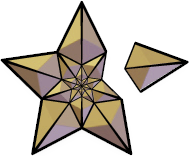Wikipedia:Wikipedia Signpost/2005-05-30/Substubs and templates
Substubs deprecated, templates standardized
This column will focus on changes in Wikipedia's guidelines, policies and style guides. It is intended as a semi-regular feature, so people can learn of developments in this area without having to track every discussion.
Recent changes include the deprecation of substubs and the finalization of a standard model for article templates. Meanwhile, debate continues over the issue of nesting templates inside other templates, or "meta-templates".
The substub memorial
It has been a long-standing tradition to mark short or incomplete articles as stubs to let them get attention and expansion. In July 2004, based on a reference in the instructions about stubs, Mike Storm took it upon himself to promote substubs, a category of extremely short stubs particularly in need of attention. However, this idea was controversial, with some people considering it a distinction without a difference, and others believing that substubs were effectively speedy deletion candidates.
In November, a less controversial stub-sorting WikiProject was created by AllyUnion and others, in order to categorize stubs into such things as actor stubs, Japan stubs and even extraterrestrial geology stubs. The project picked up new members rapidly, and currently has eighty participants, making it one of the largest WikiProjects.
Through several months of hard work, the number of uncategorized stubs slowly but steadily diminished. Presently there are about a thousand left, which may seem like a lot, but is only a fraction of the amount earlier. Therefore, it was recently decided that there was no further need for a separate category of substubs. The template and category were put up for deletion, and afterwards a solemn memorial was set up by the joyful project members.
So, whenever a short or incomplete article needs to be tagged as such, the template {{stub}} will do the job, along with its many children and grandchildren in the template tree.
Avoiding overlap of jurisdictions
WikiProject Stub Sorting is setting up a separate page for the deletion of stub-related templates and categories, at WP:SFD. The intent is to prevent having to hold the same discussion twice, on both Categories and Templates for Deletion. Also, people have a tendency to refer such a matter back to the WikiProject, unaware that the nominator and most of the voters are in fact members of that project.
WikiProject Stub Sorting has well-defined guidelines for when and how to use stub templates (and categories) so people who want to create or remove a stub template are advised to discuss the matter with them.
The template standard
Early in April, some users discussed the idea of streamlining the look of article templates, such as those for Featured Articles and the Collaboration of the Week. Violet/Riga put together a proposal, and asked everyone to design the perfect template style.
Wikipedians put their creativity to work, and more than twenty different template schemes were drawn up, in a wide variety of color and styles. By the end of April, the matter of choosing one amidst the many possibilities was put up for a vote.
With more than twice as many votes as any other candidate, the CoffeeRoll style designed by ClockworkSoul was the designated winner.
The list of standardized templates and their layout can be found at WP:TS. All active WikiProjects might want to consider adapting to this standard, which makes use of the class="Talk-Notice" stylesheet class and looks like this:

|
This article is a current featured article candidate. A featured article should exemplify Wikipedia's very best work, and is therefore expected to meet several criteria. |
Recursive templates
Since their introduction, templates have quickly become a popular feature for consistency, layout, or simply bringing a matter to people's attention (e.g. Template:Cleanup). However, because they make a page or article more complex, templates cause an increased consumption of server resources. It is often commented upon that Wikipedia is not limited by disk space, which is indeed true. However, Wikipedia is, at least to some extent, limited by our database's programming, and the computing power of our servers.
A meta-template is simply a template included in another template. For instance, a number of templates that look like colored boxes could plausibly include a basic template to determine the box size and color. It seems obvious that any demands made on the server by regular templates, are multiplied for meta-templates. In an essay on Avoid using meta-templates, leading MediaWiki developer Jamesday explains in detail how meta-templates affect server performance.
Thus, whenever a meta-template is in use, people should consider whether this is in fact necessary. A very simple workaround is using the syntax {{subst:templatename}}, which basically copies and pastes the meta-template into the main template, thus combining the two into one.


Discuss this story